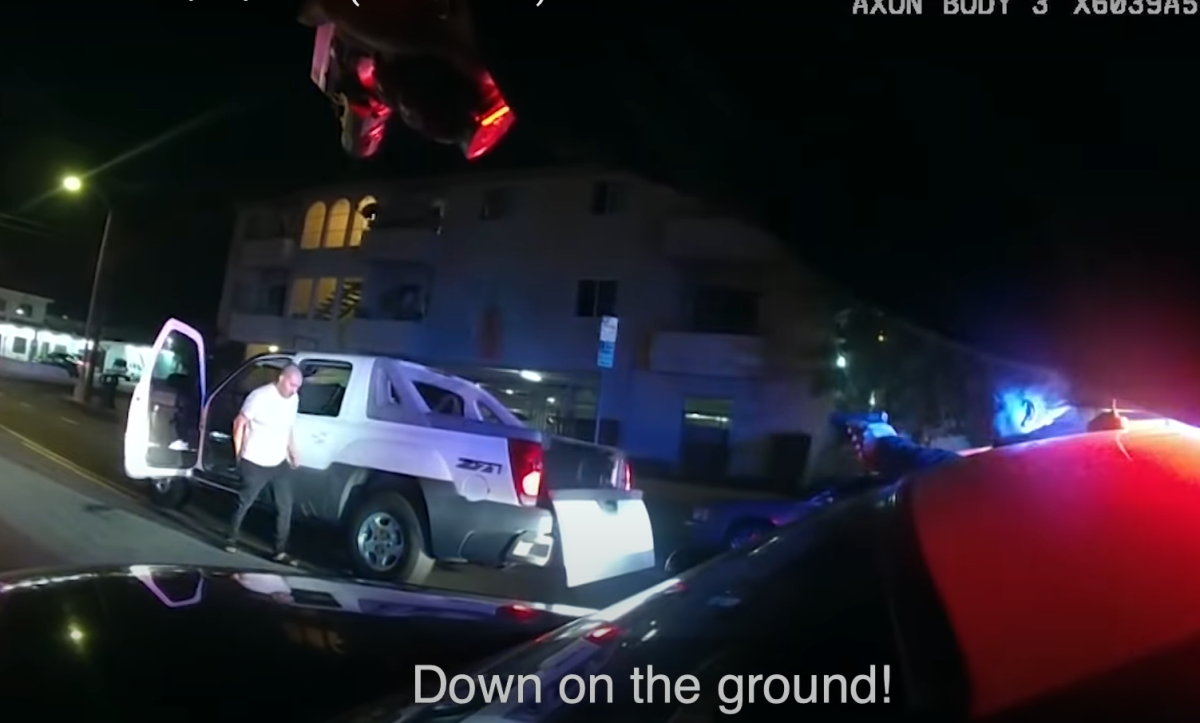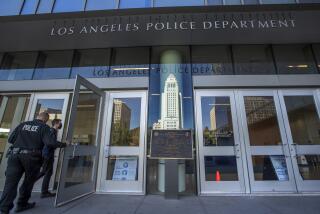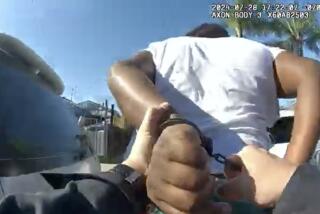Strikes on suspect after attack on LAPD officer were excessive, panel rules

A Los Angeles police officer used excessive force when he repeatedly struck an unarmed suspect on the head after the man allegedly attacked another officer last year, according to a police oversight panel.
The civilian Police Commission found the force that other officers used on the suspect was justified — including the officer who was attacked while he manned the front desk at the Harbor Community station and fought back, and the station’s watch commander who shot at the suspect as he fled the building.
The commission voted unanimously that Officer Frank Partida broke department policy with four blows — including a “hammer strike” with his fist to the suspect’s chest and three strikes with his forearm and elbow to the suspect’s head.
Partida delivered the blows after the suspect, Jose Guzman, 30, exited a truck he had used to flee the station and Partida tackled him to the ground, according to a review of the incident submitted to the commission by LAPD Chief Michel Moore.
A security camera in the station captured the attack on Officer Anthony Freeman in the station’s lobby. A man police identified as Guzman knocked Freeman to the ground, yanked his gun away from him, and repeatedly pistol-whipped the officer with his own weapon. Guzman then pointed the gun at Freeman’s chest at close range before running out of the station.
Freeman “observed Guzman pull the trigger of the service pistol at least once,” but the gun did not discharge, Moore said in his report.
The watch commander, Sgt. Robin Aguirre, then entered the lobby and exchanged gunfire with the suspect through the front doors of the station. Aguirre and Guzman each fired twice, according to the chief’s report.
A pursuit followed, ending with Partida’s takedown after Guzman stopped and got out of his truck.
Guzman was charged with attempted murder of a police officer and other crimes. He has pleaded not guilty.
The commission’s ruling that Partida used excessive force against Guzman aligned with conclusions by Moore and an internal LAPD review board, which found Partida’s strikes “were not proportional nor objectively reasonable based on the threat posed by Guzman,” and “not the appropriate utilization of force for a suspect who was passively resisting,” according to the chief’s report.
The report said the board reached its conclusions despite noting the attack at the Harbor station and the “chaotic and dynamic” nature of the vehicle stop.
The commission also disapproved of various tactics used by officers during the pursuit and arrest of Guzman, including Partida’s decision to rush in and take Guzman down without first communicating his plan to his fellow officers on the scene.
Partida told investigators that he could see both of Guzman’s hands and didn’t believe he was armed but felt he needed to arrest Guzman immediately before he could get to a nearby home or business.
“I didn’t want him to barricade himself,” Partida said.
Partida said his first strike to Guzman’s chest, after he had taken Guzman to the ground, was meant as a “distraction strike to subdue the suspect” and prevent him from getting up.
The subsequent strikes to Guzman’s head were an attempt to keep him on the ground without putting him in a hold that might restrict his airway or oxygen to his brain, Partida said. One such restraint, the carotid artery hold, was banned by the LAPD and other departments in the state after the murder of George Floyd by a Minneapolis police officer in May 2020.
“Well, because of the whole George Floyd thing and the situations that are like that, that we cannot be on the carotid or head area, I didn’t want to apply constant pressure to that area because of the sensitivity,” Partida told investigators. “So as he kept trying to get up and move and twist, that’s when I applied force down.”
“It wasn’t out of anger or anything like that,” Partida said.
Whether Partida will be punished was unclear.
More to Read
Sign up for Essential California
The most important California stories and recommendations in your inbox every morning.
You may occasionally receive promotional content from the Los Angeles Times.










